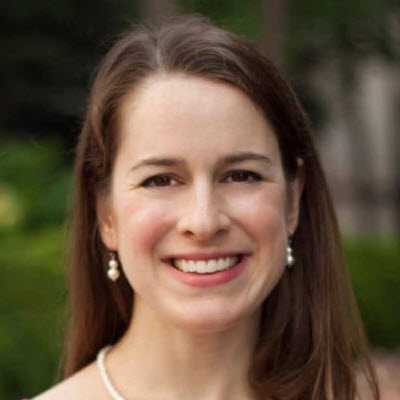All students, and especially students of color, benefit when they have opportunities to learn from teachers of color.1 On this, the research is unequivocal. But while the teacher workforce has become more diverse over time, it has not kept pace with the increasing diversity of the student population.
Building a teacher workforce that is more racially diverse is a top priority for most, if not all, districts.
Where are districts making progress in attracting more teachers of color, and what can others learn from them? To find out, NCTQ interviewed leaders from five districts who are using recruitment strategies and establishing a culture that supports teacher retention to build a more diverse teacher workforce.2 Despite their differences in approaches, key lessons emerged that were common to their success. We lay out promising practices and lessons learned from each district below.
District leaders who shared their strategies:
| Blackstone Valley Prep (BVP), Public Charter Network, Rhode Island – Joshua Giraldo, Chief of Human Capital |
| Chicago Public Schools (CPS), Illinois – Ben Felton, Acting Chief Talent Officer, Chicago Public Schools |
| Indianapolis Public Schools (IPS), Indiana – Dwayne Marshall, Director of Talent Acquisition |
| Knox County Schools (KCS), Tennessee – Alex Moseman, Executive Director of Talent Acquisition, formerly with Indianapolis Public Schools |
| Montgomery County Public Schools (MCPS), Maryland – Dr. Susan Marks, Acting Chief, Human Resources and Development |
Strategy 1: Recruit inside (and outside) the box
Establishing a strong and diverse pool of teacher applicants is a necessary first step in the hiring process. To do this, several of the districts identified above aim to go beyond standard recruitment efforts at teacher prep programs and job fairs to reach potential teachers and drive interest in teaching.
Montgomery County Public Schools (MCPS) leverages technology in their outreach. The district uses a platform called Handshake to contact teacher candidates in teacher prep programs as well as students earning degrees in math, English, and other hard-to-fill subjects such as computer science. The district can assist these students with relevant majors in obtaining teaching certifications. In the 2021-2022 academic year, the recruitment team sent about 1,200 emails via Handshake, largely targeting outreach to students at minority-serving higher education institutions. The team also holds “pop-up” events at malls, where they have found success recruiting paraprofessional educators and bus drivers.
Knox County Schools (KCS) employs a simple strategy to recruit teachers: stickers. School board members, the mayor, and others keep stickers on hand to pass on to anyone who may be interested in a career in the classroom, enabling people beyond the district’s recruitment team to engage potential new teachers. The stickers say, “Join our team,” and have a QR code that brings people to a fillable form, and routes directly to a recruiter and automatically helps people schedule a time to talk with a recruiter. So far, the district has gotten over 100 leads for potential teachers (and they are three times as diverse as the district’s current teachers), though Knox County Schools will not have data on the success of these stickers leading to new hires until the end of the hiring season. This same form is used in other outreach efforts, all with the goal of simplifying the process of getting candidates in the door so that recruiters can more easily “cultivate and nurture folks to get them excited about working in schools,” as Alex Moseman, Executive Director of Talent Acquisition, explained.
Chicago Public Schools (CPS) has recently taken a more deliberate approach at the district office than they had in years past to both leverage student teaching as a recruitment strategy and to deploy student teachers more intentionally. While local teacher prep providers had previously coordinated clinical experiences directly with schools, the district has now shifted to a centralized approach (facilitated by the district central office) to ensure that student teachers are assigned to the schools that need them most (e.g., placements in strong schools in low-income neighborhoods), and work with the most effective mentor teachers. CPS pays both student teachers and their supervising teachers, and extends interviews to effective student teachers upon program completion.
Strategy 2: Build your own pipeline
Ben Felton of Chicago Public Schools sees only two ways to diversify the teacher workforce: ”
you either take a bigger slice of the pie…or you grow the size of the pie.” The districts we spoke with have worked to do both: recruit a larger share of candidates of color, and expand the number of available candidates of color in the hiring pool.
For
Montgomery County Public Schools (MCPS), recruiting from within the district carries the added benefit of being able to recruit the right candidates. The district has established a Grow Your Own (GYO) Program to help current MCPS support staff become licensed teachers; between FY21 and FY22, this program has produced 115 teachers (with another 46 expected in FY23), as well as eight people in support positions (and another 67 anticipated); only nine people who went through the program are no longer employed in MCPS. Additionally, the district is launching a pipeline program in partnership with Bowie State University (a historically Black university) that puts current high school students in the district on a pathway to college and back to MCPS. Students will be free to select their own major, while also working towards a secondary education certificate. Students will receive $5,000 in scholarships, and in return commit to returning to MCPS, whether in a teaching role or other, non-teaching job like IT.
Chicago Public Schools (CPS) has adopted a similar model, with a five-year pipeline program, “Teach Chicago” for current CPS high school students to begin coursework towards an education degree while participating in a program in partnership with City Colleges of Chicago and Illinois State University. Through this program, CPS high school students interested in teaching receive free tuition, intensive academic support and mentoring, funds for textbooks and other expenses, and will be offered full time teaching roles at CPS after successfully completing the program. Now in its third year, the program is scaling up to a cohort of 100 students per year.
CPS also recruits current teaching assistants in the district (particularly those coming from special education classrooms), to both diversify their workforce and create a pool of new teachers in hard-to-staff subject areas. Teachers in the CPS Teacher Residency program complete an intensive, one year program serving in a hard-to-staff CPS school while taking courses from one of four university partners. Participants earn a salary and benefits, and receive discounted tuition while undergoing training in the classroom, then earn a bachelors or masters degree and a teaching license when they successfully complete the program. From roughly a dozen participants in the program’s first year, CPS now trains 200 staff per year in this program, which requires a multiyear commitment to teach in hard-to-staff CPS schools after completion. Participants are roughly 80% Black and Latinx, and Ben Felton says many are CPS parents and graduates. Felton says that retention numbers have been “phenomenal,” with close to 100% retention.
Knox County Schools (KCS) has benefited from Tennessee’s expanding Grow Your Own grant program and new registered apprenticeship for teachers.3 Through a partnership with University of Tennessee Knoxville, the district offers a Registered Apprenticeship into which the district actively recruits from among its current staff, especially paraprofessionals. Participants receive free tuition and a salary and benefits during an internship year while they earn a certificate in special education, math, science, or secondary English language arts; the district is working on expanding the available pathways in the future. Once candidates have made sufficient progress on the program’s learning competencies and met the state’s requirements, they become a teacher of record. The district also has a separate district-operated preparation program Career and Technical Education positions. Of this new approach, Alex Moseman says, “It transforms the dynamic that has existed for a long time where districts partner with [teacher prep programs], and now [teacher prep programs] partner with districts. [Prep programs] are now subject to district demand, where they cannot do their work without districts (whereas before it was the other way around).”
Blackstone Valley Prep (BVP), a charter network of six schools across Rhode Island, is not receiving enough candidates of color from teacher preparation programs in the state, so the network is cultivating their own candidates through their own teaching fellows program. BVP recruits and selects candidates into the fellowship program and assigns two fellows to each of their schools. The fellows bolster school capacity by serving as substitute teachers as needed, while training to become future teachers of record. The fellows are supported by a full time coach, and by coursework from Western Governors University. Roughly 65% of participants identify as people of color. The program is in its second year; roughly half a dozen teachers have completed their certification and been hired by the network.
Strategy 3: Look for ‘values fit’ and evidence from past teaching
When interviewing these HR leaders across the country, each spoke to their district’s clearly identified core values or standards of practice, including a focus on diversity, that are integrated into district hiring processes and practices. Further, they emphasized that the hiring process can serve both as an opportunity to introduce teachers to those values and to vet teachers for alignment with those values.
Several spoke specifically to the importance of hiring teachers who align with the district’s core values. As part of the screening of applicants, the Central Office HR team in Indianapolis Public Schools asks applicants, “Why do you think more affluent students perform higher on standardized assessments than lower-income students?” Teacher applicants’ responses can give insight into their understanding of the impact of poverty and racism on student opportunity and achievement gaps—and the extent to which they align with the districts’ core values.
Similarly, Joshua Giraldo of
Blackstone Valley Prep shared interview questions that look for alignment with the charter network’s mission of intentional diversity, such as: “What motivates you to be a teacher or work in education?” “What do you believe are the qualities of a high-quality college prep education, and how do you prioritize these in your classroom?” and “What does diversity mean to you?”
These leaders also ensure that applicants understand the characteristics of the students in the schools in which they would teach—both the rewards and the challenges they should expect.
Blackstone Valley Prep encourages applicants to review videos and articles about their school and its approach to intentional diversity in advance of interviews. Indianapolis Public Schools promotes “teacher stories” on the IPS district website to give applicants insight into what it’s like to work in their schools and the Indianapolis community. The IPS HR team also uses the interview process to set the expectation with applicants that if hired, they will be expected to engage in a tremendous amount of professional learning, and that teachers are expected to be “hungry” to learn and to grow as educators.
Dr. Susan Marks of
Montgomery County Public Schools told us that more than any interview question, she puts stock in evidence of effectiveness. A standard part of the application is to request data on teachers’ past evaluation ratings. By its nature, this approach works well for districts that have a large number of veteran teachers applying; those that hire predominantly novice teachers may consider requesting evaluations from clinical practice or student teaching instead.
Strategy 4: Help principals make good hiring decisions
In many districts, school principals make the final decision on hiring. However, the process can often be time-intensive; several districts we spoke to are working to streamline the process so that principals can focus on making the best hiring choices, rather than on managing logistics.
Mr. Moseman of Knox County Schools (KCS) shared,
“I’ve never worked with a principal who said they didn’t want a more diverse staff….If you give principals and hiring managers more capacity, if you lower the lift of hiring…then they can act on what’s a priority for their school already.”
One way KCS has made it easier for principals to hire diverse and effective teachers of color is by using a scheduling tool that allows applicants to schedule interviews on their own, within a principal’s predetermined available blocks of time. While this may seem small, it can save principals multiple calls or emails per candidate. A second change is to encourage principals to leverage teams of staff to conduct some of the screening and then make their recommendation to the principal for their ultimate decision. This team-based hiring approach brings the added benefit of engaging more members of the staff, creating a more inclusive hiring process and more investment in their new colleagues from the start.
Chicago Public Schools (CPS) has also adjusted hiring systems to best work for their needs. Specifically, the district has created a central hiring pool for teachers with an “early offer” program. Because the district hires about 1,500 teachers each year, they begin recruiting early (around January and February), enabling them to extend offers to teachers far before many other districts would send out offers—a strategy that CPS believes helps them to secure high quality candidates early, while creating a strong pool of candidates for principals to start from. The early offer hiring process includes an interview with a recruiter, then a school-based interview process lead by principals, which often includes sample lessons, data reviews, and group interviews. CPS recruiters who know the schools well match candidates with possible positions in specific schools, saving principals time in the interview process (while still giving principals ultimate say over who they hire into their schools). Once an applicant makes it through the district’s early offer screening and hiring process, the district guarantees a position and agrees to cover the salary of any teacher who did not receive a placement. However, Mr. Felton said that this has not happened yet. This process does not limit principals’ autonomy: while roughly 60% of new teachers are hired through this central pool, the rest are hired directly by principals.
Similar to CPS’ focus on hiring managers forming relationships with schools, Montgomery County Public Schools (MCPS) assigns HR staff to clusters of schools, so that when a school leader has a question, they already have a connection with an HR person.
Streamlining the application process and dedicating HR staff time can also reduce the burden on those seeking jobs. In MCPS, the HR team has looked carefully at the hiring process to see if there are points where they tend to lose applicants. As an example, Dr. Marks shares, “If you say ‘Oh, we have to wait for three references before we send them to schools,’ you’re going to lose that candidate.” Research bears out that starting the hiring timeline sooner can help recruit more effective teachers; it stands to reason that keeping the hiring process from dragging out too long can also yield benefits.
Strategy 5: Build a system where teachers want to stay
Just as important as cultivating a diverse cohort of new teachers is rewarding and retaining them. Blackstone Valley Prep (BVP) has created incentives to help retain educators who bring specific assets. Teachers can earn an additional 1-2% of their current salary based on what the district calls “impact factors,” such as being a first-generation college graduate, bilingual, or who have lived in a community of color for ten years or more. While some districts may be hesitant to adopt such direct rewards for fear of legal repercussions, Mr. Giraldo says that not only is this incentive directly connected to supporting student success, it is also something that all teachers can become eligible for—any teacher could, for instance, take classes to learn Portuguese, one of the primary languages spoken by the district’s students.
Using these impact factors as part of the selection criteria, BVP has started to build a leadership pipeline for teachers of color, too: This year, BVP launched a fellowship for current BVP teachers to train for school leadership positions (as grade-level chairs, Deans, or principals), with three candidates (all teachers of color) currently preparing for leadership roles, with a commitment to hire successful fellowship graduates when leadership roles become available.
During his time at Indianapolis Public Schools, Alex Moseman said that he was proud that the district had intentionally worked to close their retention gap between white teachers and teachers of color, seeing a 10% increase in retention for teachers of color over a four year period. “We all but closed the gap in retention of teachers of color in 2021-22, reaching only a 0.4 percentage point gap in retention of teachers of color versus white teachers. It’s hard to pinpoint one thing that made it happen, but I would attribute it at least in part to organizational culture and ensuring that sure leaders hold the beliefs that you want to instill in staff.”
To support retention of current teachers, Chicago Public Schools‘ Talent Office relaunched Lead with CPS in February 2023, to build leadership pathways for teachers (e.g., as mentor teachers, department chairs, and team leads), to publish leadership development opportunities on a central and accessible website, and to refine the recruitment and selection process “to limit or mitigate bias by training and setting standards and guidelines for diverse candidate pools and selection criteria.” This program just launched and does not yet have results to report.
Strategy 6: Set a goal, monitor progress, make adjustments, and celebrate success
Many leaders know that they want to build a workforce that is more racially and ethnically diverse. But how do districts know if they are on the right track, and when they have accomplished that goal? The district leaders we spoke to emphasized their work to quantify success, to track their progress along the way, and to use data to inform the strategies they take to get there.
Blackstone Valley Prep set an explicit goal to increase the proportion of leaders, teachers, and staff who identify as Black, Indigenous, and people of color (BIPOC) by three percentage points in one academic year, from 30% to 33%—an increase of 10 full time staff. Mr. Giraldo spoke to the need to revisit the goal along the way; for example, ESSER funds have allowed the network to hire more staff of color, but those new hires have mostly been to support staff roles. While the district has met the goal on paper, they still seek to hire more teachers and leaders of color. This charter network also has built more comprehensive data systems to track staff demographics. The network had always been able to collect data on race/ethnicity, and since implementing its “Impact Factors” bonus program, staff voluntarily provide data on whether they’re first-generation college students and/or multilingual (and if so, which languages they speak).
Several years ago, Montgomery County Public Schools (MCPS) hired an outside firm to conduct an “Antiracist Systems Audit” to better understand the district’s strengths and shortcomings. The audit, released in October 2022, included a document review, an “equity audit tool,” surveys of over 120,000 stakeholders (including students, staff, and families), community conversations, and focus groups. This audit helped identify some challenges for the district.
MCPS also uses data to inform their ongoing recruitment efforts. For example, they track how many people they hire from recruitment events across the country, to inform future recruitment efforts. They also track where their best candidates were recruited from, to revisit those locations (or recruitment approaches) in future years. Dr. Marks also shared some areas where they need to shore up their data. For example, the district’s teacher retention is higher than that of the nation and the state of Maryland, but they do not yet have retention data specifically for teachers of color. MCPS also tracks data on their entire district workforce in annual Staff Statistical Profiles. These profiles include data on school leaders, new teachers, and all teachers (among other groups), including demographic breakdowns (by gender, race, and age), and how many new teachers had graduated from the district’s high schools (a helpful data point for districts focused on Grow Your Own programs).
In Indianapolis Public Schools (IPS), the district started a “Proving What’s Possible” initiative, which seeks to recruit and retain diverse teachers through several pathways, including residencies and an apprenticeship program.4 The district also began a micro-credentialing program to enlist and license people to teach in the district.5 Mr. Marshall tracks data on the number of applicants of color, how many take teaching jobs in the district, and retention rates for staff of color. IPS is already reporting success associated with this initiative, including a four percentage point increase in new teachers who identify as people of color (up from 29% two years prior) over the last two school years, and a nine percentage point increase in applicants of color over the prior year.
Chicago Public Schools (CPS) captures data on who makes it through the hiring pipeline, broken out by race. They’re able to track who gets interviewed, where people student teach, who gets jobs, and who stays in the classroom. When districts disaggregate data to this level, they are able to identify whether teacher attrition is happening earlier or later in their careers, whether attrition is due to layoffs versus teachers choosing to leave, and more. (Read more about districts’ layoff policies and their implications for workforce diversity in this District Trendline.)
Mr. Felton also identified the areas where CPS hopes to expand data collection, especially around exit surveys to better understand why teachers leave. He envisions one day being able to create a predictive model that can look at past trends so that HR or the Talent Office can intercede to better support teachers before they choose to leave. Until then, they can track the data, but are relying only on “lagging indicators.”
Strategy 7: Demonstrate commitment through leadership and dedicated resources
A shared commitment across district leadership and the broader community are critical to achieving ambitious results. Each district leader emphasized that committed leaders can build buy-in across the district and direct resources to support workforce diversity efforts.
In Chicago Public Schools (CPS), Ben Felton pointed to a demonstrated commitment to teacher diversity and to the importance of allocating significant resources to support ambitious change. This work has cost several million dollars, which, given the size of the district, comprises only a small percentage of the total budget. In addition to dedicated staffing and program funds from the district, CPS also leverages federal dollars (primarily from Teacher Quality Partnership grants) and philanthropic support.
Dedicated budget and staff time have been critical for Joshua Giraldo’s team at Blackstone Valley Prep (BVP): “Put your time and money where your mouth is. If you want something to happen, allocate a budget for it. Allocate staff time, positions, or else it’s not going to happen.” In the first year of the teaching fellows program, Giraldo found that BVP needed more dedicated staff to support and prepare the fellows. In their second year of the Teaching Fellows program, Blackstone Valley created a new position to support their fellows and felt that fellows are becoming much stronger instructors as a result.
This commitment becomes even stronger when supported by the broader district community. In both Indianapolis Public Schools (IPS) and Montgomery County Public Schools (MCPS), human capital staff pointed to districtwide racial equity commitments that supported their work. At IPS, racial equity is one of four strategic priorities in the district’s strategic plan. The plan outlines the need to “strengthen and expand racial equity to…align policies and talent decisions,” accompanied by clearly defined goals including that staff surveys show that all teachers feel well equipped to be advocates for racial justice, and that Black special education students will not be suspended or expelled at a higher rate than their peers. At MCPS, the anti-racist system audit mentioned above formed the basis of a new implementation plan to increase the diversity of its teacher workforce.
Moving ahead with optimism and a focus on outcomes
The district leaders who shared their strategies with us exuded optimism and excitement about this work. They took on the important work of shifting the demographics of the teacher workforce, and in a few short years, they are seeing positive results.
Mr. Felton of Chicago Public Schools shared,
“I’m an incrementalist. I think getting five to 10% better every year is really important. I remember the first year we got 2% more teachers of color than the year before—but I could see the scale growing, the runway to these strategies really working. We failed a million times along the way. We tried things that didn’t work. We had good ideas for which we couldn’t get funding. There’s paralysis around finding the perfect program; such a thing doesn’t exist, so we learned to lean into and double down on the programs and strategies showing promise. And now, we’re proud to be seeing the results!”
Not every strategy will be successful, and these leaders found that it was important to track successes and failures along the way, test out multiple approaches rather than relying on one single strategy, and adjust as they learned. With these steps, in only a few years, these districts are building a more diverse, representative teacher workforce, one that will better meet the needs of the students they teach.
More like this

From the source: What strategies do teachers of color believe will be most successful in recruiting and retaining teachers of color?
A new RAND Corporation survey asked teachers what would be the most effective strategies to recruit and retain more teachers of color.

What do we know about retaining special education teachers of color?
New research finds that paraprofessional support, time, caseload, resources, and professional development all play major factors in retention.

Four states working to close the teacher diversity gap
Few areas of teacher policy have received as much overdue attention over the past few years as teacher diversity.
Endnotes
- Evidence of student achievement gains, especially for Black students with Black teachers, comes from Egalite, A., Kisida, B., & Winters, M. (2015). Representation in the Classroom: The Effect of Own-Race Teachers on Student Achievement. Economics on Education Review, 45, 44-52; Goldhaber, D., & Hansen, M. (2010). Race, Gender and Teacher Testing: How Informative a Tool is Teacher Licensure Testing and How does it Impact Student Achievement? American Educational Research Journal, 47(1), 218-51; and Dee, T.S. (2004). Teachers, Race, and Student Achievement in a Randomized Experiment. The Review of Economics and Statistics, 86(1), 195-210. A new working paper leveraging random assignment of students to teachers finds that having a teacher of color is associated with improved outcomes for students of color (in self-efficacy, classroom engagement, math and ELA achievement, and attendance, and finds positive outcomes in self-efficacy for white students assigned to a teacher of color. Blazar, D. (2021). Teachers of Color, Culturally Responsive Teaching, and Student Outcomes: Experimental Evidence from the Random Assignment of Teachers to Classes. (EdWorkingPaper: 21-501). Retrieved from Annenberg Institute at Brown University: https://doi.org/10.26300/jym0-wz02.
- We identified districts that had built a racially diverse teacher workforce by 1) leveraging data collected by the Washington Post, 2) reviewing news stories that spotlighted districts that have prioritized anti-bias hiring and teacher diversity, and 3) through word of mouth.
- New America defines Grow Your Own Programs as “partnerships between educator preparation programs, school districts, and community organizations that recruit and prepare local community members to enter the teaching profession and teach in their communities.” Grow Your Own Programs across the country vary widely in their design and adherence to a specific model, while apprenticeship programs follow a stricter model. Apprentices learn the skills for a job through a combination of coursework and time spent learning on the job under the supervision of a mentor, all while earning an hourly wage that increases as apprentices gain skills, along with a credential (usually a license, but sometimes also a degree). Apprenticeships are typically designed as partnerships between an employer, an education partner, and a sponsor. Approved by the U.S. Department of Labor, a registered apprenticeship must meet national standards for rigor and quality. Approval confers a nationally-recognized credential for apprentices, along with worker protections like minimum pay rules, and unlocks state and federal workforce dollars to fund the program, among other benefits.
- While teacher residency models vary, they typically include teaching alongside a mentor teacher for a year-long clinical practice experience in tandem with academic coursework, and are often followed by a commitment to teach for a certain number of years in the district in which they trained. See previous footnote for definition of apprenticeship programs.
- A micro-credential is defined by the NEA as “a short, competency-based recognition that allows an educator to demonstrate mastery in a particular area.” In other words, it is a training module focused on a discrete topic, often done through self-paced online instruction. Microcredentials can sometimes be combined together or “stacked” to lead to certification.


